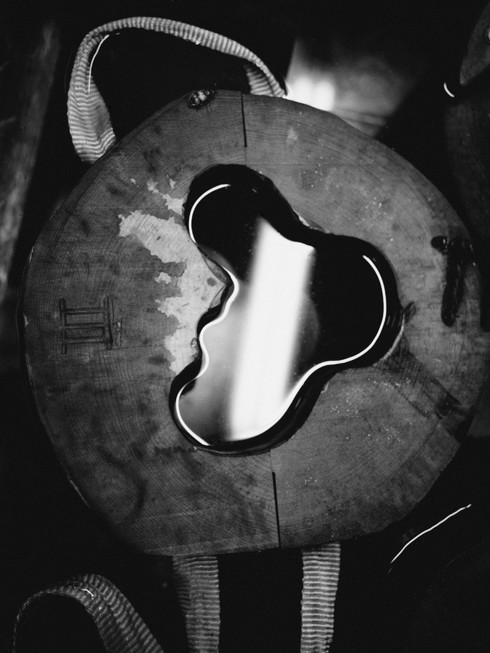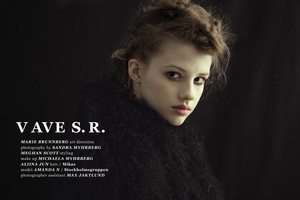The Art of Contrasts: Interview with Janni Vepsäläinen on Innovation and Tradition
Written by Jahwanna BerglundOdalisque Magazine sits down with Janni Vepsäläinen, the visionary Creative Director at Iittala, to explore her dynamic journey from fashion to the world of interior design. Having recently unveiled the Kaamos collection, a tribute to both Iittala’s heritage and modern design, Janni discusses her passion for craftsmanship, the evolving role of design in our lives, and the inspiring contrasts of Finnish nature that shaped the new collection. In this interview, we delve into her design philosophy, the timeless influence of Iittala’s archives, and her vision for the future of the iconic brand.
Jahwanna Berglund: What do you see as your biggest challenges in moving from fashion to the interior world?
Janni Vepsäläinen: While moving from fashion to design naturally presents new challenges, such as adjusting to a different pace and processes, I see more opportunities than obstacles. Both industries are driven by creativity and share common themes like sustainability, individuality, and craftsmanship. My background in fashion has taught me to embrace innovation and bold thinking, qualities that are equally useful in the world Iittala represents, by bringing fresh perspectives and new ideas. The cross-disciplinary movement is becoming more common, and I believe it can help create exciting new synergies and enhance best practices. Thinking outside the box can take creativity in brands to new directions.
JB: Can you tell us about some of your earliest design memories and how they have shaped your design philosophy?
JV:As a small child, I was always interested in creating and drawing. I was a pretty shy kid, so expressing myself through creativity was the most natural thing to do. It’s hard to pinpoint my first design memory, but I vividly remember the summer art camps I used to attend. It was there that I had access to more interesting materials and learned new techniques. I remember creating papier-mâché cups and bowls at the age of six.
JB: How did the opportunity to become Creative Director at Iittala come about, and what motivated you to take on this role?
JV: The opportunity came at a time when I was considering my next steps, potentially starting my own brand. Iittala’s offer intrigued me, especially after I visited the Iittala glass factory. Watching the craftspeople work up close reminded me of the deep connection between material and artistry, much like what drew me to knit design in fashion. Iittala's rich heritage, pioneering role in Finnish design and craftsmanship, and cultural relevance made this opportunity irresistible. Contributing to such an iconic brand’s future felt like a once-in-a-lifetime opportunity.
JB: What elements of Iittala's existing design philosophy do you find most inspiring?
JV: What I find most inspiring is Iittala’s bold, open-minded approach to design, which has been part of the brand’s success throughout the decades. Iittala's history of creating designs that are progressive and not bound by prevailing trends, like Aino Aalto's minimalist tableware designs in the 1930s or Tapio Wirkkala's groundbreaking Ultima Thule series in the 1960s, is remarkable. The brand has consistently embraced experimentation while honouring its heritage, all while maintaining an ethos of lasting design.
JB: Are there specific iconic Iittala designs that hold personal significance for you?
JV: Yes, of course! Like many Finns, I grew up with the brand. My favourite Iittala classic is the Aino Aalto series. I love it because it is so simple yet quintessentially modern. But most of all, it’s my favourite because I personally admire and connect with Aino. She was a bold female creative at a time when the creative landscape was dominated by male figures. She didn’t compromise on her creative vision. Her glass series was launched in 1932, when public taste in home décor was dominated by floral patterns and decorative elements. She had the courage to push for her vision and bring a completely new perspective to the creative industry. I often feel that she paved the way for young, creative women like me. I want to continue in her footsteps, standing on her shoulders.
JB: How does the Kaamos collection pay tribute to Iittala's design heritage while introducing new elements for modern audiences?
JV: The Kaamos collection pays tribute to Iittala’s design heritage by showcasing the craftsmanship and artistry that have defined the brand for over a century. It highlights both archival pieces and new designs, bringing together iconic works from designers like Wirkkala, Sarpaneva, Aalto, and Toikka, who have all played a significant role in shaping not only Iittala but also Finnish design as a whole. These archival pieces, dating from the 1930s to the 1970s, continue to feel relevant today, demonstrating their lasting impact.
At the same time, the collection introduces fresh elements for modern audiences, such as updated colourways and completely new designs. By reintroducing some lesser-known archival items, Kaamos gives them new life, allowing them to become part of a contemporary narrative while continuing to reflect Iittala’s heritage and the expertise of its glassblowers. This collection reinforces Iittala’s commitment to nurturing traditional craftsmanship while remaining relevant in today’s design landscape.
JB: What inspired the focus on contrasts in the Kaamos collection, particularly between the delicate nature of glass and the larger-scale sculptures?
JV: Finnish nature is full of contrasts, the changing light from the brightness of summer to the darkness of winter, the warmth, energy, and liveliness of the summer versus the cold, quietness, and stillness of winter. What I found especially inspiring when designing the collection is the time of year in autumn when these contrasts meet, as we stand at the intersection of summer and winter. Glass, the material in focus for this collection, is full of contrasts itself. It’s fluid and malleable when hot but becomes hard and fragile as it cools. The Kaamos sculptures, crafted by our master glassblowers, embody these natural contrasts. Their vast scale juxtaposed with the delicate nature of glass reflects the powerful opposites in Finnish life and nature, capturing that essence through the artistry of glass.
JB: What role do materials like the locally sourced sand used for the Aalto vases play in highlighting Iittala’s commitment to Finnish craftsmanship?
JV: The use of local Finnish sand in the special edition Aalto vases is a celebration of our deep connection to Finnish nature and glass expertise. This sand, naturally rich in iron, gives the glass its unique shades of green, reflecting the Finnish landscape. At the heart of our commitment to craftsmanship is the Iittala glass factory, operating since 1881, and preserving artisanal skills passed down for generations. These skills were recognised by UNESCO's list of Intangible Cultural Heritage in 2023, and we want to continue strengthening the craft and keeping the tradition alive.
JB: Are there any particular areas of design or product categories that you would like to explore or expand?
JV: There’s a world of possibilities for Iittala, both in-home and beyond, in familiar categories and new areas. We’ve ventured into new categories like textiles and candles, as well as on-the-go products, and I see further potential in these areas. I’m also excited about more unexpected collaborations that could expand the brand’s boundaries. These explorations can introduce new sides to Iittala, showing its versatility and taking it to exciting new places while staying true to its core values of craftsmanship and design.
JB: Are there particular designers or artists you hope to collaborate with in the future to bring fresh perspectives to Iittala's product line?
JV: While I can’t name specific artists yet, collaboration is central to Iittala’s creative vision. We want to work with artists and brands from diverse fields, not just those familiar with design, but also talents from different areas of culture. Our goal is to continue experimenting with new ideas, reinforcing Iittala’s role as a pioneer in craftsmanship and design, and also as a creator of culture. We want to provide a platform for young artists to express their talents, celebrating the art of glassmaking in innovative ways.
JB: Given Iittala's international acclaim, how do you plan to ensure that the brand continues to resonate with a global audience while maintaining its Finnish identity?
JV: Iittala’s legacy is rooted in Finnish design and craftsmanship, which resonates globally. We recognise the importance of evolving to speak to new audiences while staying relevant to existing ones. This means continuing to push the boundaries of artistic innovation, collaborating with artists, designers, and brands from diverse fields, experimenting with both familiar and new materials, and exploring new creative avenues that allow us to create design that feels contemporary without losing sight of our roots. Additionally, connecting with audiences goes beyond products, it’s about creating experiences and storytelling that resonate on multiple levels.









